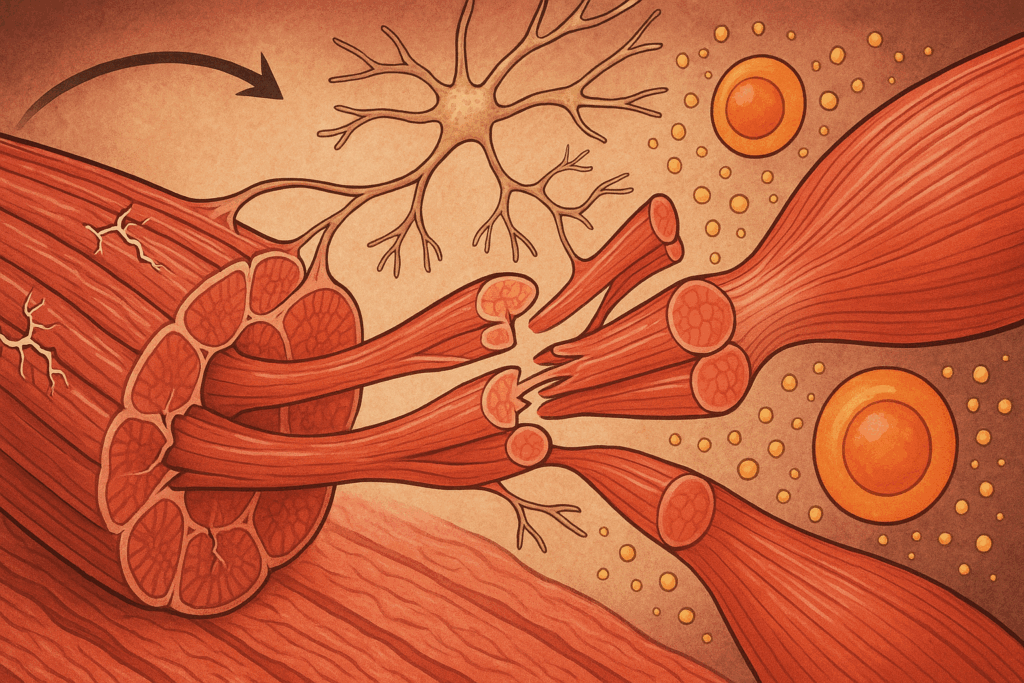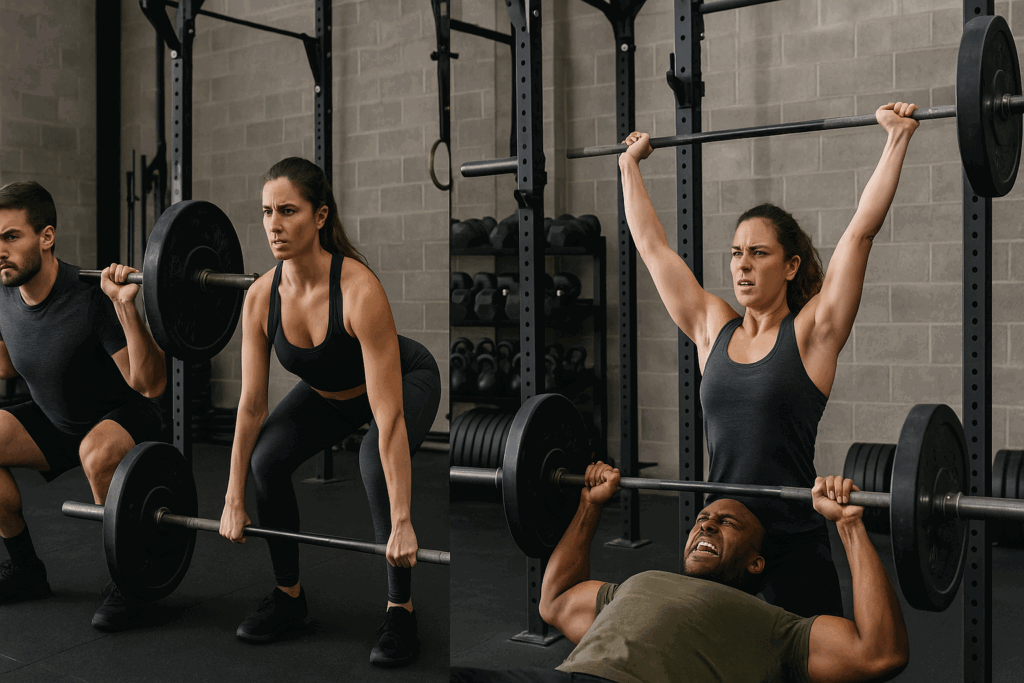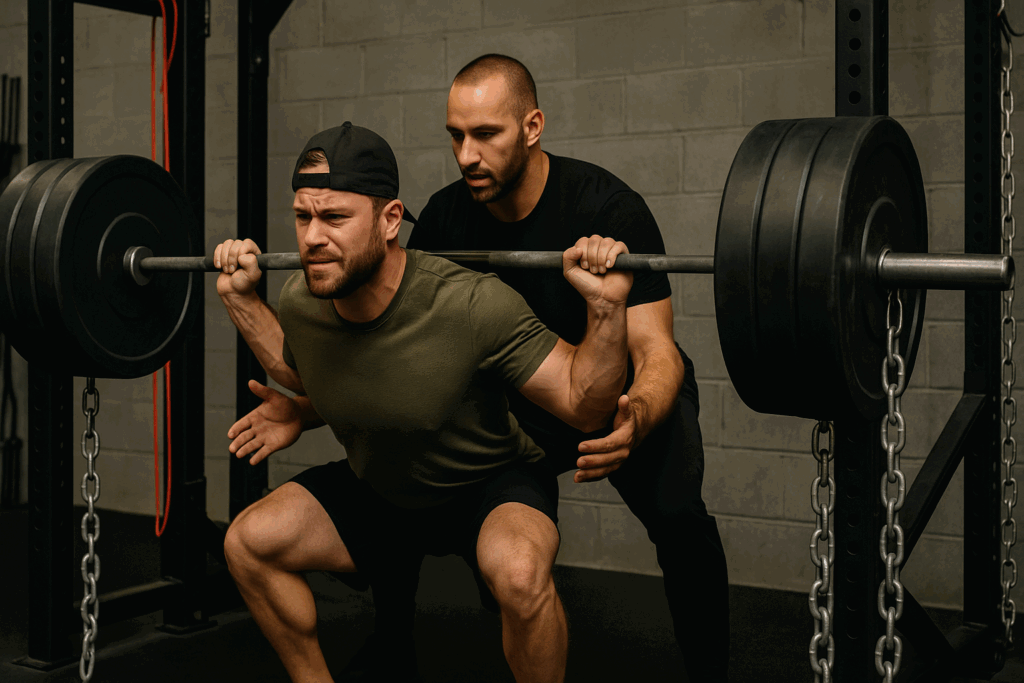Introduction: Why Strength Conditioning Matters for Lifelong Muscle and Performance Gains
Strength conditioning is far more than just lifting weights—it’s a comprehensive approach to physical development that enhances muscle growth, athletic performance, injury prevention, and long-term physical resilience. In an era where fitness trends often shift quickly and new routines rise and fall with popularity, strength conditioning remains a time-tested and scientifically supported strategy that builds both form and function. At its core, strength conditioning blends resistance training with dynamic movement, neurological control, and recovery protocols designed to push the boundaries of human potential in a controlled, progressive, and sustainable way. Whether you’re a competitive athlete, weekend warrior, or simply someone seeking optimal physical health, understanding and implementing a well-structured strength conditioning training program can help unlock transformative results in size, strength, and performance capacity.
This guide is designed to go beyond surface-level tips. Instead, it delivers a deep dive into the physiological mechanisms, practical programming strategies, and advanced principles that underlie effective strength conditioning. We’ll explore how to develop a scientifically grounded strength and conditioning plan tailored to your goals, examine specific strength movements that contribute to hypertrophy and performance, and provide expert insight into creating a strength and conditioning routine that aligns with your lifestyle and recovery needs. With an emphasis on evidence-based practices, this article brings together the most effective tools and methodologies to help you make meaningful, measurable gains in strength and muscular development.
You may also like: The Ultimate Hypertrophy Workout Program for Building Strength and Size

The Science Behind Strength Conditioning and Muscle Growth
At the heart of any effective strength conditioning training program lies an understanding of muscle physiology and adaptation. Skeletal muscle is a remarkably plastic tissue that responds to mechanical stress by increasing in size (hypertrophy), improving neural activation patterns, and enhancing metabolic efficiency. When muscles are subjected to progressive overload—where stress is gradually increased through heavier resistance, increased volume, or more complex movement patterns—they initiate cellular signaling pathways that promote protein synthesis, satellite cell activation, and structural remodeling of muscle fibers.
One of the foundational components of strength conditioning is its impact on motor unit recruitment. During high-intensity resistance training, the nervous system becomes more efficient at activating large motor units responsible for powerful movements. This neural adaptation plays a pivotal role in developing explosive strength, especially when coupled with compound strength movements like squats, deadlifts, presses, and Olympic lifts. Over time, these adaptations translate into not only greater force production but also improved intermuscular coordination, balance, and proprioception.
Moreover, strength and conditioning exercises induce beneficial hormonal changes. Acute sessions trigger the release of anabolic hormones such as testosterone, growth hormone, and insulin-like growth factor-1 (IGF-1), which work synergistically to stimulate muscle protein synthesis and tissue repair. While the hormonal response to training is transient, regular exposure to challenging strength and conditioning routines helps maintain a favorable anabolic environment over the long term. Importantly, research shows that consistent training is far more critical than any one “perfect” workout, highlighting the value of long-term adherence to a well-designed strength conditioning plan.

Designing a Personalized Strength and Conditioning Program
Creating an individualized strength and conditioning program begins with a clear understanding of your goals, training history, and physical limitations. For those focused on muscle hypertrophy, the emphasis may lean toward moderate rep ranges (6–12 reps), higher total training volume, and shorter rest intervals to maximize metabolic stress and muscle fiber recruitment. Conversely, athletes seeking maximal strength will benefit from lower rep ranges (1–5 reps), heavier loads, and longer rest periods to allow for neural recovery and ATP replenishment.
The periodization model you choose can also significantly influence your results. Linear periodization gradually increases intensity while reducing volume over time, making it ideal for beginners or those returning from a layoff. Undulating or non-linear periodization, which varies intensity and volume within shorter cycles (such as weekly or even daily), has been shown to be effective in advanced lifters who need novel stimuli to continue progressing. Regardless of the model, all successful strength conditioning training programs share certain core elements: progressive overload, specificity, recovery, and individualization.

In addition, the choice of exercises should reflect both your aesthetic and functional goals. Compound movements such as the barbell squat, bench press, and pull-up form the foundation of any solid routine, while isolation exercises can be used to address specific muscle imbalances or aesthetic priorities. Incorporating strength and conditioning exercises like sled pushes, medicine ball slams, and resisted sprints can enhance athleticism, work capacity, and metabolic conditioning. When structured correctly, these elements form a synergistic strength conditioning routine that develops both muscular hypertrophy and athletic capability.

Key Strength Movements That Drive Results
There is no substitute for foundational strength movements when it comes to building serious muscle and strength. These exercises engage multiple muscle groups simultaneously, create significant mechanical tension, and allow for progressive overload—three essential ingredients for muscle growth. The squat, deadlift, bench press, and overhead press are the “big four” in any effective strength conditioning training program. These lifts provide unmatched stimulus to the body’s largest muscle groups and develop force production capacity across major movement planes.
The barbell squat, for instance, is a full-body lift that emphasizes the quadriceps, hamstrings, glutes, and lower back while also requiring core stabilization and upper body engagement. Variations like the front squat, box squat, and Bulgarian split squat offer unique angles and benefits, allowing lifters to address weak points and improve mobility. Similarly, the deadlift is a posterior chain powerhouse that enhances grip strength, spinal stability, and hip extension power—qualities that are foundational to both performance and injury prevention.
Pulling and pressing movements round out the strength base. The bench press builds chest, shoulder, and triceps strength and is a staple of upper-body hypertrophy. Meanwhile, overhead pressing develops the deltoids, trapezius, and upper back, contributing to a balanced and powerful upper frame. Accessory movements, such as bent-over rows, lunges, and hip thrusts, can be strategically inserted into your strength and conditioning plan to target specific muscles and support larger compound lifts. Collectively, these strength movements form the skeletal structure upon which all successful strength conditioning routines are built.
Frequently Asked Questions (FAQ): Strength Conditioning for Muscle Growth and Performance
How can I make strength conditioning more effective for long-term results?
To enhance long-term outcomes, it’s essential to adopt a strategic and adaptive mindset toward strength conditioning. Rather than repeating the same strength and conditioning routine for months, gradually manipulate variables such as tempo, time under tension, and load distribution to promote new neuromuscular adaptations. Periodic assessments and reassessments of your mobility, symmetry, and energy levels can help ensure your strength conditioning training program evolves alongside your capabilities. Integrating biofeedback tools like velocity-based training devices or wearable trackers also allows real-time adjustments that improve program efficiency. Additionally, maintaining psychological engagement through varied strength and conditioning exercises or cyclical training themes can prevent mental burnout and reignite performance breakthroughs.
What role does cognitive focus play in strength conditioning success?
Cognitive engagement is a highly underrated component of any strength conditioning training program. Mental presence during lifts increases motor unit recruitment and enhances neuromuscular synchronization, which contributes to better technique and power development. Visualization strategies, such as rehearsing a lift mentally before execution, prime the nervous system for more efficient movement. Furthermore, attentional cues like internal focus (feeling the muscle contraction) or external focus (driving through the ground during a squat) can shape movement patterns and influence strength outcomes. By cultivating mindfulness in your training environment, you can also reduce distractions that undermine the intensity required for strength and conditioning success.
How do I balance strength and conditioning exercises with cardio training?
Combining strength and conditioning exercises with cardiovascular work requires intelligent sequencing and periodization. One effective strategy is to schedule conditioning workouts on separate days or after lower-intensity strength sessions to avoid interference with muscle recovery. When both must occur on the same day, prioritize the session aligned with your primary goal—strength movements first if hypertrophy or power is your focus. For athletes aiming to improve metabolic efficiency, incorporating moderate steady-state cardio post-lift or high-intensity interval training (HIIT) on alternate days can enhance endurance without compromising muscle gains. Recovery modalities like cold immersion or contrast baths may also support recovery between different training demands.
What are some overlooked strength movements that can maximize gains?
While major lifts often dominate most programs, many underutilized strength movements offer immense value. The Zercher squat, for instance, forces core engagement and reinforces upright posture under load. Jefferson deadlifts uniquely challenge asymmetrical strength and grip stability. The reverse sled drag conditions the posterior chain and boosts tendon resilience, particularly beneficial for knee health. Similarly, landmine presses allow shoulder-friendly pressing variations with a natural arc, making them ideal for individuals with mobility limitations. Adding these movements to a strength and conditioning plan not only addresses weaknesses but also enhances functional capacity and joint integrity.
How can I individualize my strength and conditioning program without a coach?
Even without a coach, you can personalize your strength and conditioning program by adopting a structured yet flexible approach. Start by identifying your training history, goals, available equipment, and recovery capacity. Use tools such as the RPE scale or tracking software to monitor fatigue and adapt volume accordingly. Educational platforms, lifting communities, and strength conditioning literature can provide templates, which you can tweak based on your feedback. Recording your lifts regularly enables technique self-assessment, and journaling training insights can reveal patterns in recovery, strength plateaus, or psychological readiness that warrant program adjustments.
Are there specific mobility drills that enhance strength conditioning?
Yes, mobility drills tailored to your movement patterns significantly enhance performance in any strength and conditioning routine. Thoracic spine extensions, for instance, facilitate better overhead mechanics and improve vertical pressing strength. Hip 90/90 transitions enhance hip capsule rotation, which improves squat and lunge depth. Ankle dorsiflexion drills, such as weighted knee-to-wall movements, are critical for efficient gait and squat balance. Incorporating dynamic stretches like leg swings and controlled articular rotations into your warm-up also prepares the joints for the demands of high-load strength movements. Mobility should not be treated as an afterthought; instead, it must be programmed with the same intention as your core strength conditioning training.

Strength Conditioning Strategies to Break Through Plateaus
When progress stalls, reexamining the progression model in your strength conditioning routine is crucial. Instead of always increasing load, manipulate volume through higher frequency or cluster sets to vary the stimulus. Eccentric overload training, where you focus on the lowering phase of strength movements, can also promote new muscle fiber recruitment and strength adaptations. Furthermore, incorporating partial range lifts—such as pin presses or rack pulls—can strengthen weak points within specific movement phases. Psychological variety is equally valuable; switching from barbell to dumbbell versions of key lifts can stimulate engagement while promoting unilateral balance. These strategic variations reawaken your nervous system and prevent stagnation in your strength conditioning training program.

Emerging Trends in Strength Conditioning Technology
The landscape of strength conditioning is being reshaped by cutting-edge technology that delivers both accountability and insight. Velocity-based training systems, for instance, track bar speed to determine fatigue levels and dictate appropriate loads per session. Wearable EMG sensors now allow athletes to identify which muscles are most active during various strength movements, enabling smarter exercise selection. AI-driven coaching apps personalize strength and conditioning programs based on real-time user feedback and historical data. Augmented reality platforms are also emerging, offering lifters form feedback overlays and spatial awareness cues for safer, more effective lifts. These tools mark a new era in precision training, helping athletes reach goals with greater efficiency.
How do lifestyle factors outside the gym impact strength and conditioning results?
Sleep, stress, and daily activity levels play an undeniable role in determining the effectiveness of any strength and conditioning plan. Sleep affects hormone production, especially growth hormone and testosterone, both critical for muscle repair and hypertrophy. Chronic stress, on the other hand, elevates cortisol, which impairs recovery and blunts protein synthesis. Non-exercise activity thermogenesis (NEAT), such as walking, household chores, and job-related movement, contributes to overall energy expenditure and metabolic flexibility. Nutrition and hydration status further modulate your readiness for strength and conditioning exercises. An integrated lifestyle approach that supports recovery is not optional; it is foundational to maximizing your training return.
Psychological and Emotional Benefits of Long-Term Strength Conditioning
Beyond its physical advantages, a sustained strength conditioning practice fosters psychological resilience and emotional well-being. Mastering challenging strength movements over time builds self-efficacy, reinforcing the belief in your ability to overcome obstacles. Structured progression in a strength conditioning training program can provide a sense of control and accomplishment, especially valuable during periods of life stress or instability. Moreover, consistent participation in strength and conditioning routines has been linked to reductions in anxiety and depressive symptoms through neurochemical mechanisms such as increased dopamine and serotonin release. The discipline developed in the weight room often extends into other life domains, enhancing productivity, self-discipline, and confidence. These benefits remind us that strength conditioning is not just about lifting weights—it’s about lifting the quality of life itself.
Conclusion: Putting It All Together for Lasting Strength and Muscle Gains
Strength conditioning is not a short-term fix or a trend to follow temporarily; it is a powerful and sustainable approach to building a stronger, healthier, and more capable body over the long term. By grounding your training in proven science, tailoring your strength and conditioning program to your unique goals, and consistently applying the principles of overload, recovery, and specificity, you set yourself up for success that endures beyond any single training cycle. The fusion of discipline, strategic planning, and intelligent progression turns strength and conditioning from a workout into a lifestyle.
Moreover, the long-term benefits of a consistent strength and conditioning routine extend far beyond muscle size and power output. Enhanced movement quality, reduced injury risk, improved metabolic health, and greater physical confidence all stem from a program built on sound principles and smart execution. Whether you’re just beginning or refining your approach as an experienced lifter, applying the strategies outlined in this guide will position you to achieve meaningful, measurable progress in both muscle growth and performance.
In the end, strength conditioning offers more than just a blueprint for physical transformation. It offers a path to becoming your strongest, most resilient self—one rep, one session, and one program at a time. With knowledge as your foundation and consistency as your tool, there are truly no limits to what you can accomplish through the power of intelligent strength and conditioning.
Further Reading:
15 Strength And Conditioning Training Exercises You Can Add To Your Workout





